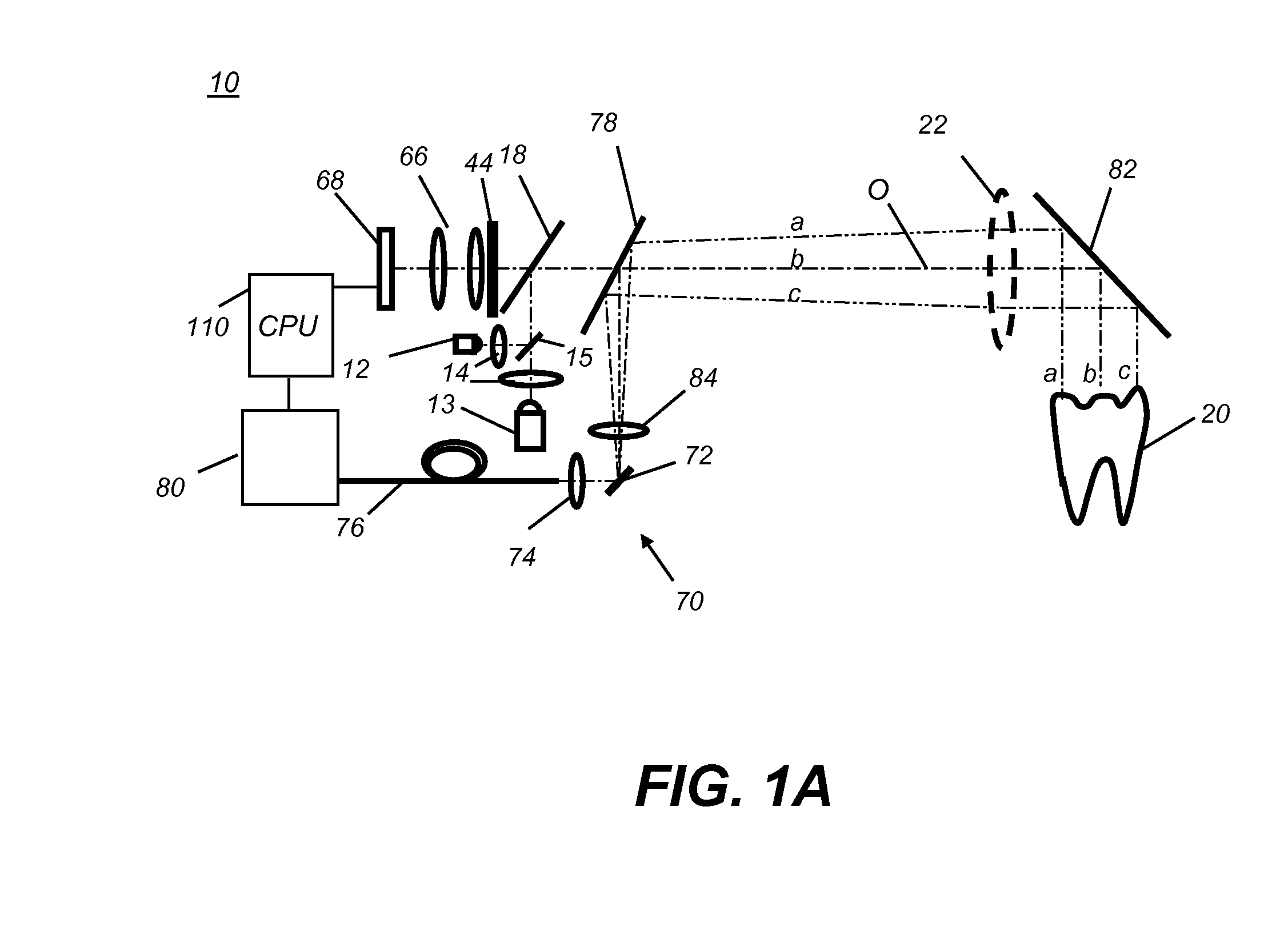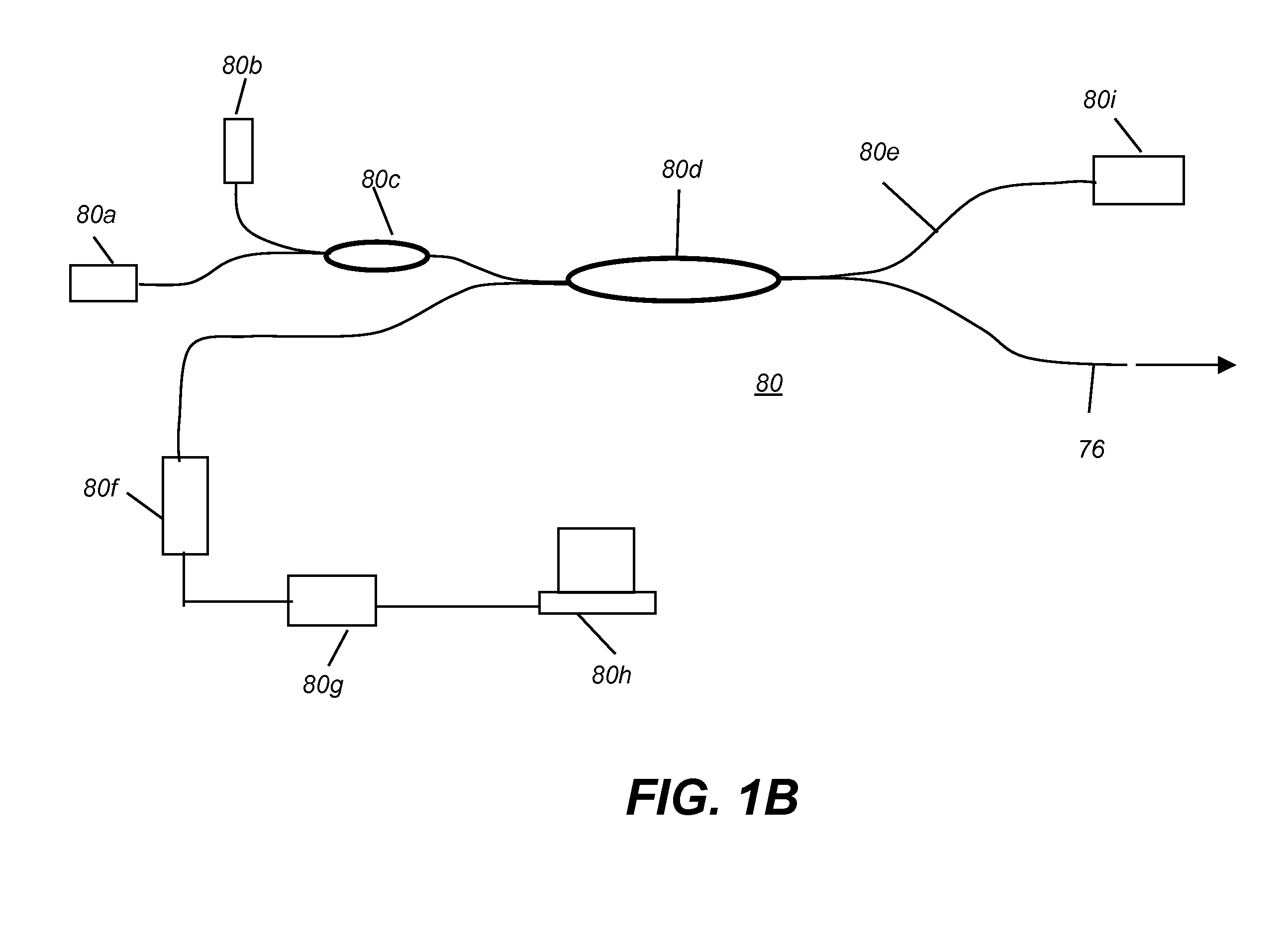Apparatus for dental oct imaging
a technology for oct imaging and dental apparatus, applied in the field of dental oct imaging apparatus, can solve the problems of permanent tooth damage and even tooth loss, exposure to x-ray radiation, risk of damage to weakened teeth, and spreading infection by tactile methods
- Summary
- Abstract
- Description
- Claims
- Application Information
AI Technical Summary
Benefits of technology
Problems solved by technology
Method used
Image
Examples
Embodiment Construction
[0064]The present description is directed in particular to elements forming part of, or cooperating more directly with, apparatus in accordance with the invention. It is to be understood that elements not specifically shown or described may take various forms well known to those skilled in the art.
[0065]The present invention combines area imaging capabilities for identifying a region or regions of interest on the tooth surface with OCT imaging capabilities for obtaining detailed OCT scan data over a specified portion of the tooth corresponding to a portion of the region of interest. A region of interest is defined as a region of the tooth which has features indicative of potential caries sites or exhibits other defects which would warrant further investigation by OCT imaging. In order to understand the nature and scope of the present invention, it is instructive to first understand its area imaging capabilities. OCT capabilities are then described subsequently. A variety of area ima...
PUM
 Login to View More
Login to View More Abstract
Description
Claims
Application Information
 Login to View More
Login to View More - R&D
- Intellectual Property
- Life Sciences
- Materials
- Tech Scout
- Unparalleled Data Quality
- Higher Quality Content
- 60% Fewer Hallucinations
Browse by: Latest US Patents, China's latest patents, Technical Efficacy Thesaurus, Application Domain, Technology Topic, Popular Technical Reports.
© 2025 PatSnap. All rights reserved.Legal|Privacy policy|Modern Slavery Act Transparency Statement|Sitemap|About US| Contact US: help@patsnap.com



